See also
| | This disambiguation page lists articles associated with the title Imperial Eagle. If an internal link led you here, you may wish to change the link to point directly to the intended article. |
Imperial Eagle can refer to:
| | This disambiguation page lists articles associated with the title Imperial Eagle. If an internal link led you here, you may wish to change the link to point directly to the intended article. |
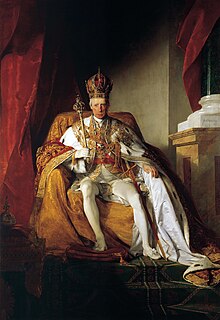
Francis II was the last Holy Roman Emperor from 1792 to 1806 and, as Francis I, the first Emperor of Austria from 1804 to 1835. He assumed the title of Emperor of Austria in response to the coronation of Napoleon as Emperor of the French. Soon after Napoleon created the Confederation of the Rhine, Francis abdicated as Holy Roman Emperor. He was King of Hungary, Croatia and Bohemia. He also served as the first president of the German Confederation following its establishment in 1815.

The Holy Roman Empire was a multi-ethnic complex of territories in Western and Central Europe that developed during the Early Middle Ages and continued until its dissolution in 1806 during the Napoleonic Wars. The largest territory of the empire after 962 was the Kingdom of Germany, though it also included the neighboring Kingdom of Bohemia and Kingdom of Italy, plus numerous other territories, and soon after the Kingdom of Burgundy was added. However, while by the end of the 15th century the Empire was still in theory composed of three major blocks – Italy, Germany, and Burgundy – in practice only the Kingdom of Germany remained, with the Burgundian territories lost to France and the Italian territories, ignored in the Imperial Reform, although formally part of the Empire, were splintered into numerous de facto independent territorial entities. The external borders of the Empire did not change noticeably from the Peace of Westphalia – which acknowledged the exclusion of Switzerland and the Northern Netherlands, and the French protectorate over Alsace – to the dissolution of the Empire. By then, it largely contained only German-speaking territories, plus the Kingdom of Bohemia, the southern Netherlands and lands of Carniola. At the conclusion of the Napoleonic Wars in 1815, most of the Holy Roman Empire was included in the German Confederation.

Eagle is the common name for many large birds of prey of the family Accipitridae. Eagles belong to several groups of genera, some of which are closely related. Most of the 60 species of eagle are from Eurasia and Africa. Outside this area, just 14 species can be found—2 in North America, 9 in Central and South America, and 3 in Australia. It is nicknamed the king of all birds.

The Austrian Empire was a Central European multinational great power from 1804 to 1867, created by proclamation out of the realms of the Habsburgs. During its existence, it was the third most populous empire after the Russian Empire and the United Kingdom in Europe. Along with Prussia, it was one of the two major powers of the German Confederation. Geographically, it was the third largest empire in Europe after the Russian Empire and the First French Empire. Proclaimed in response to the First French Empire, it partially overlapped with the Holy Roman Empire until the latter's dissolution in 1806.

The Guelphs and Ghibellines were factions supporting the Pope and the Holy Roman Emperor, respectively, in the Italian city-states of central and northern Italy. During the 12th and 13th centuries, rivalry between these two parties formed a particularly important aspect of the internal politics of medieval Italy. The struggle for power between the Papacy and the Holy Roman Empire arose with the Investiture Controversy, which began in 1075, and ended with the Concordat of Worms in 1122. The division between the Guelphs and Ghibellines in Italy, fuelled by the imperial Great Interregnum, persisted until the 15th century.

The coat of arms of Germany displays a black eagle with a red beak, a red tongue and red feet on a golden field, which is blazoned: Or, an eagle displayed sable beaked langued and membered gules. This is the Bundesadler, formerly known as Reichsadler. It is one of the oldest coats of arms in the world, and today the oldest national symbol used in Europe.

The Order of the Iron Crown was an order of merit that was established on June 5, 1805, by Napoleon Bonaparte under his title of King Napoleon I of Italy.

The French Imperial Eagle refers to the figure of an eagle on a staff carried into battle as a standard by the Grande Armée of Napoleon during the Napoleonic Wars.
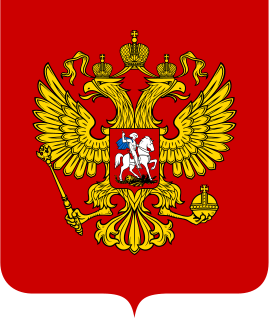
The coat of arms of the Russian Federation derives from the earlier coat of arms of the Russian Empire which was abolished with the Russian Revolution in 1917. Though modified more than once since the reign of Ivan III (1462–1505), the current coat of arms is directly derived from its medieval original, with the double-headed eagle having Byzantine and earlier antecedents from long before the emergence of any Russian state. The general tincture corresponds to the early fifteenth-century standard. The shape of the eagle can be traced back to the reign of Peter the Great (1682–1725), although the eagle charge on the present coat of arms is golden rather than the traditional, imperial black.
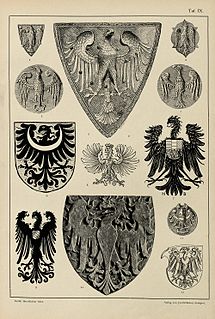
The eagle is used in heraldry as a charge, as a supporter, and as a crest. Heraldic eagles can be found throughout world history like in the Achaemenid Empire or in the contemporary Republic of Indonesia. The European post-classical symbolism of the heraldic eagle is connected with the Roman Empire on one hand, and with Saint John the Evangelist on the other.
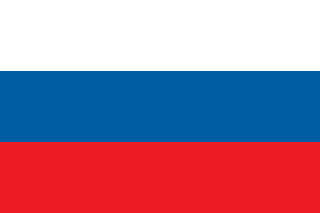
The Duchy of Carniola was an imperial estate of the Holy Roman Empire, established under Habsburg rule on the territory of the former East Frankish March of Carniola in 1364. A hereditary land of the Habsburg Monarchy, it became a constituent land of the Austrian Empire in 1804 and part of the Kingdom of Illyria until 1849. A separate crown land from 1849, it was incorporated into the Cisleithanian territories of Austria-Hungary from 1867 until the state's dissolution in 1918. Its capital was Ljubljana.

In heraldry and vexillology, the double-headed eagle is a charge associated with the concept of Empire. Most modern uses of the symbol are directly or indirectly associated with its use by the Byzantine Empire, whose use of it represented the Empire's dominion over the Near East and the West. The symbol is much older, and its original meaning is debated among scholars. The eagle has long been a symbol of power and dominion.

The Imperial Crown of Mexico was the crown created for the Emperor of Mexico on two separate occasions.
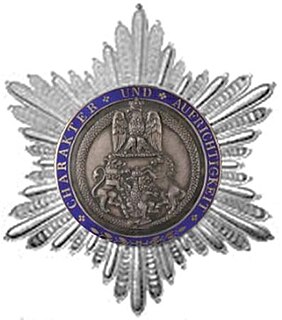
The Order of the Crown of Westphalia was instituted in Paris on 25 December 1809 by King Hieronymus I of Westphalen, better known as Napoleon's brother Jérôme Bonaparte. The motto of the Order was "CHARACTER UND AUFRICHTIGKEIT". At the back stood the words "ERRICHTET DEN XXV DEZEMBER MDCCCIX".
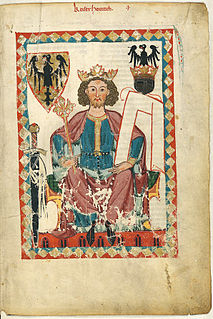
The Reichsadler is the heraldic eagle, derived from the Roman eagle standard, used by the Holy Roman Emperors and in modern coats of arms of Germany, including those of the Second German Empire (1871–1918), the Weimar Republic (1919–1933) and Nazi Germany (1933–1945).
Pont d'Iéna is a bridge spanning the River Seine in Paris. It links the Eiffel Tower on the Left Bank to the district of Trocadéro on the Right Bank.

Over its long history, the Holy Roman Empire used many different heraldic forms, representing its numerous internal divisions.
For most of its history, the Eastern Roman (Byzantine) Empire did not know or use heraldry in the West-European sense of permanent motifs transmitted through hereditary right. Various large aristocratic families did employ certain symbols to identify themselves; the use of the cross, and of icons of Christ, the Theotokos and various saints is also attested on seals of officials, but these were often personal rather than family emblems. Likewise, various emblems were used in official occasions and for military purposes, such as banners or shields displaying various motifs such as the cross or the labarum. Despite the abundance of pre-heraldic symbols in Byzantine society from the 10th century, only through contact with the Crusaders in the 12th century , and particularly following the Fourth Crusade (1202–1204) and the establishment of Frankish principalities on Byzantine soil from 1204 onwards, did heraldic uses penetrate in Byzantium. A native Byzantine heraldry began to appear in the middle and lower rungs of aristocratic families in the 14th century, coinciding with the decline of imperial authority and with the fragmentation of political power under the late Palaiologan emperors. However, it never achieved the breadth of adoption, or the systematization, of its Western analogues.

German heraldry is the tradition and style of heraldic achievements in Germany and the Holy Roman Empire, including national and civic arms, noble and burgher arms, ecclesiastical heraldry, heraldic displays and heraldic descriptions. German heraldic style is one of the four major broad traditions within European heraldry and stands in contrast to Gallo-British, Latin and Eastern heraldry, and strongly influenced the styles and customs of heraldry in the Nordic countries, which developed comparatively late. Together, German and Nordic heraldry are often referred to as German-Nordic heraldry.

The flag of the Holy Roman Empire was not a national flag, but rather an imperial banner used by the Holy Roman Emperor; black and gold were used as the colours of the imperial banner, a black eagle on a golden background. After the late 13th or early 14th century, the claws and beak of the eagle were coloured red. From the early 15th century, a double-headed eagle was used.